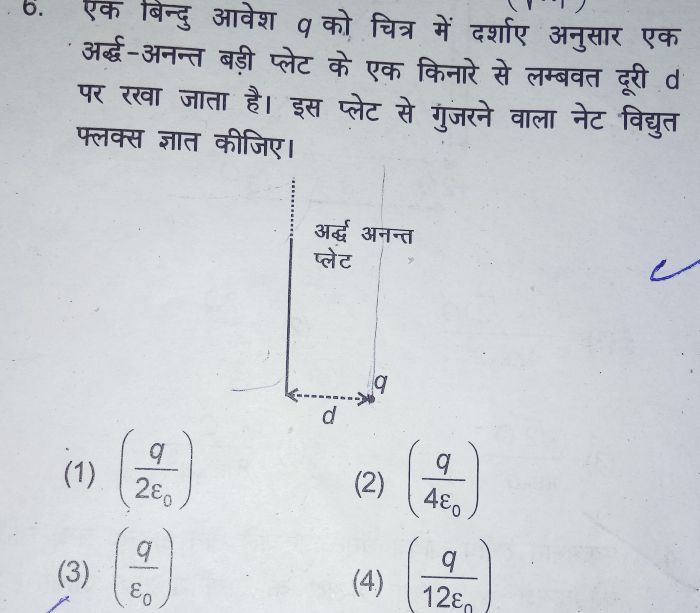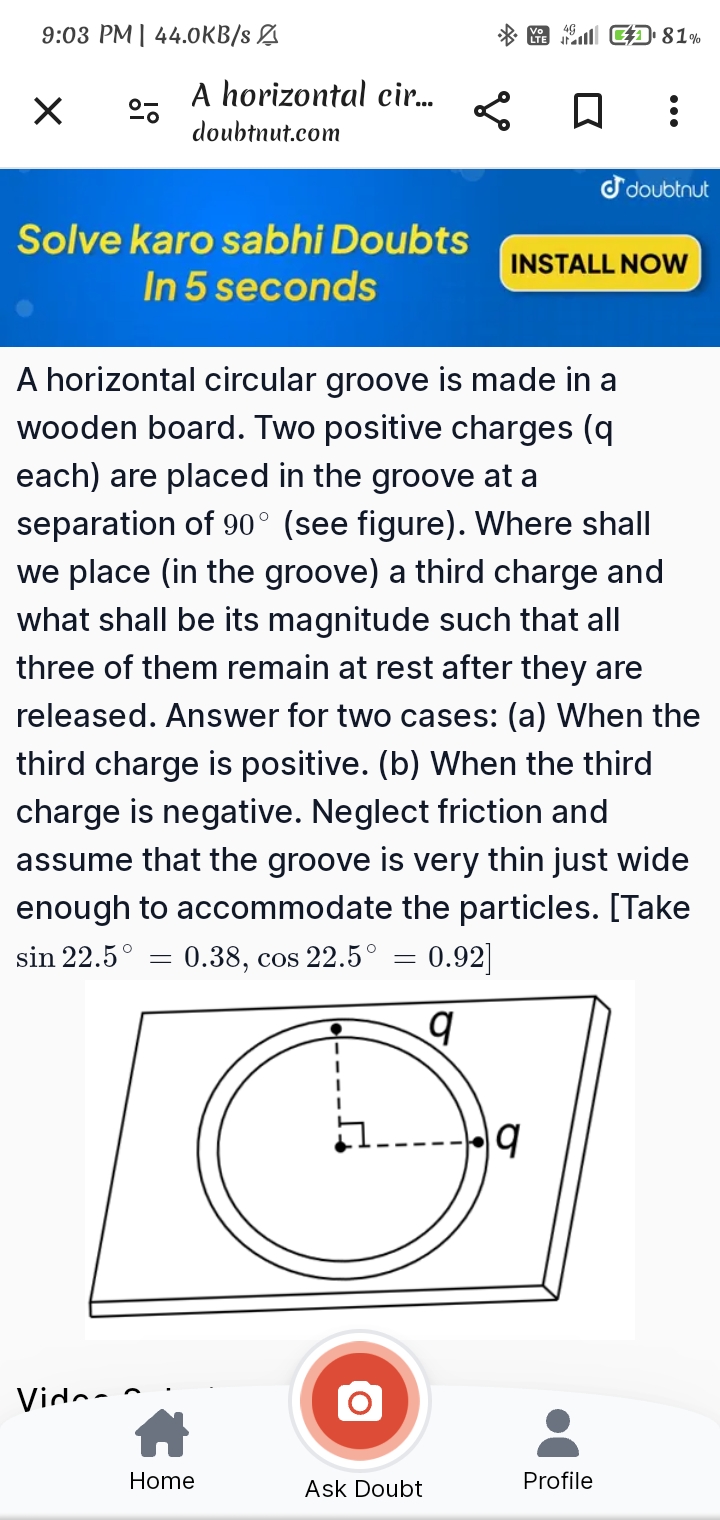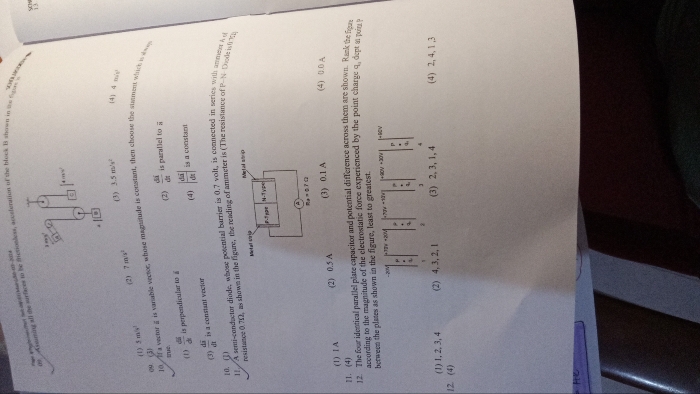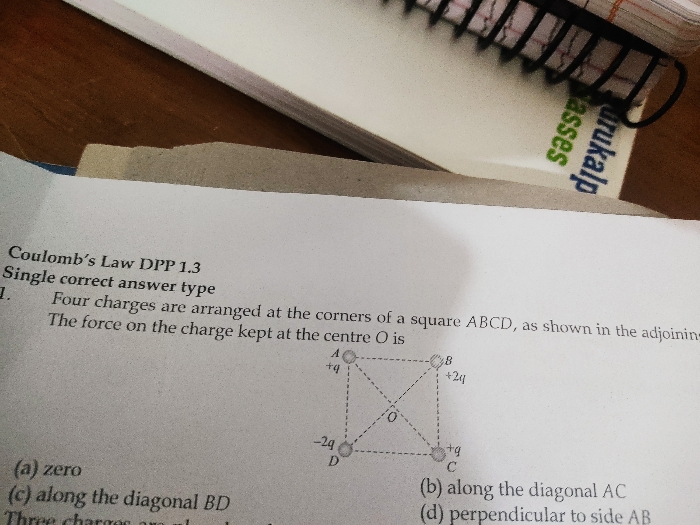JEE Class main Answered
Please,give solution

Asked by archanajain7219 | 06 May, 2022, 22:45: PM
The question understood is , a charge q is placed at one side of semi-infinite plate .
The charge q is at a distance d from the bottom of the plate.
Electric flux passing through the plate is to be determined.

Let us consider a small area dA at a distance r from bottom edge of plate .
Electric field E due to charge q at this area is given as

where K = 1/ (4πεo ) is Coulomb's constant .
Flux dφ through area is given as , dφ = E dA cosθ
where θ is the angle between electric field direction and norma to the area as shown in figure


Entire flux passing through plate is determined by integrating above expression in r-θ coordinate system

by performing above integration, we get
φ = K × q × π = q / ( 4 εo )
Answered by Thiyagarajan K | 08 May, 2022, 00:32: AM
JEE main - Physics
Asked by manishkanna555 | 07 Jul, 2024, 10:25: AM
JEE main - Physics
Asked by chandana9827 | 13 Jun, 2024, 20:28: PM
JEE main - Physics
Asked by ratnadeep.dmr003 | 21 Apr, 2024, 23:06: PM
JEE main - Physics
Asked by medhamahesh007 | 02 Apr, 2024, 11:11: AM
JEE main - Physics
Asked by chhayasharma9494 | 31 Mar, 2024, 12:47: PM
JEE main - Physics
Asked by archithateja3 | 30 Mar, 2024, 22:23: PM
JEE main - Physics
Asked by mfkatagi099 | 20 Mar, 2024, 21:35: PM






